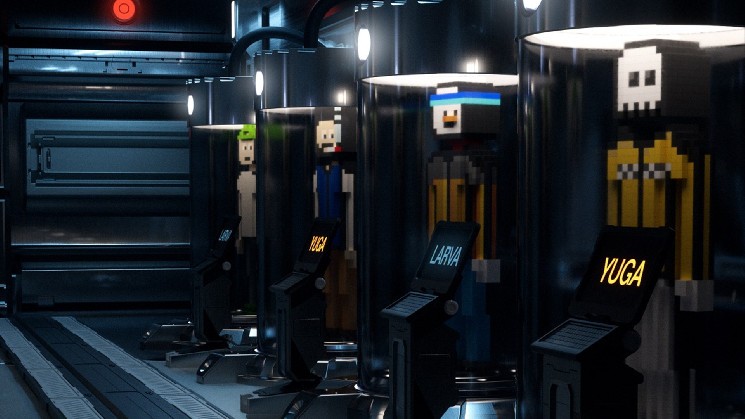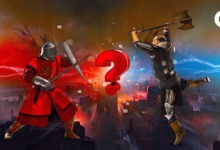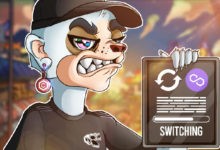MetaBirkins Artist Mason Rothschild’s Latest NFT Project Ignites Market

Non-fungible token (NFT) artist Mason Rothschild has been keeping busy since his provocative MetaBirkins project pierced the cultural mainstream and grabbed headlines after Hermès filed a trademark lawsuit against the project.
The NFT collection of 100 furry digital handbags named after Hermès’ signature Birkin handbag was released in December 2021 as a commentary on the fashion industry’s embrace of alternative textiles. This raised the ire of the French luxury house, resulting in a years-long legal battle that challenged the limits of art and trademark law.
The 28-year-old artist, whose real name is Sonny Estival, told CoinDesk that the lawsuit represented a battle not just over Web3 technologies, but also over the future of art.
«Just because it’s an NFT doesn’t mean it’s not art,» he said. «An NFT is kind of the vessel and the artwork that it’s attached to is the art.»
The jury ultimately ruled in Hermés’ favor last month, though he and his legal team have appealed the decision and have pledged to continue the fight for artistic expression.
Dusting himself off, the Los Angeles native has continued to create art, curate fashion and advise brands in Web3. He continues to split his time between Terminal 27, a retail concept located in Los Angeles and Tokyo that he co-founded in 2020, and Gasoline, his creative studio and full-service Web3 branding agency he launched in 2021.
Gasoline’s latest NFT collection, titled «This Artwork Is Subject to Change,» launched as an open edition on Manifold last month. Priced at an affordable 0.008 ETH (about $1.35 at the time), 10,987 dynamic NFTs were minted. Interest on secondary markets quickly picked up, and the project has a trading volume of 931 ETH (just under $1.7 million) so far. At the time of publishing, the collection’s floor is at 0.04 ETH (about $72).
Fueling creative ideas
Rothschild has been stoking the proverbial fire since he created his artistic moniker over a decade ago. As a kid, he was «deep into conspiracy theories,» with both «Mason» and «Rothschild» referencing fringe conspiracies about secret societies and powerful people. «I’ve literally been going by it since I was 11 or 12,» he said.
Over the past few years, Rothschild has expanded his creative endeavors and integrated NFTs into his artwork, often blending elements of design, realism and social commentary. «Everything I do is kind of ironic or taking a jab at something,» he said.
In January 2021, he founded Gasoline as a «disruptive creative studio» focused on Web3. His first NFT collection was titled «Do Not Sit,» and featured chairs that could not be used for sitting. His next NFT, the predecessor to the MetaBirkins project titled «Baby Birkin,» features a handbag with a fetus inside of it. It sold at auction for $47,000.
«I knew that this was something that was going to be massive,» he said of his move to create NFT art.
Gasoline has since expanded its offerings and has partnered with major brands on special projects. Last week, it announced a partnership with Ledger to produce a gold hardware wallet – the new «gold standard» for crypto, it claims.
According to Gasoline’s recently released whitepaper, Gasoline plans to expand its ecosystem through partnerships with global brands, focusing on driving artistic value that allows Web2 brands to authentically enter Web3. This includes plans for NFT projects, memberships, physical activations and rewards.
«In 2023, we are betting AGAINST 10k cartoon animal collections and betting ON art, access and onboarding some household names into the space with more than just a one and done drop,» it reads, a dig at PFP collections like Bored Ape Yacht Club. According to the whitepaper, Gasoline already has over a dozen collaborations scheduled for this year and received «close to seven figures in outside funding» to start its business.
«We do not have to rely on a community treasury, bolstered by royalties, to deliver,» it reads. «We believe Gasoline will create the new standard for what it means to be a part of an «‘NFT project.'»
Rothschild said this approach to NFT creation allows him to exert creative freedom over his projects and build out the Gasoline ecosystem while working with major brands to expand their intellectual property (IP).
«When I see projects today, I see them kind of get a little stagnant when their only strength is their own IP,» he explained. «What our solution is … we’ll do about four projects a year, and [collectors] get access to all those. They’ll all be in our voice. They’ll all be in our style and level of quality.»
This Artwork Is Subject to Change
This Artwork Is Subject to Change (TAISTC) follows the same satirical, tongue-in-cheek structure of Rothschild’s previous Gasoline projects. As its name suggests, the artwork attached to the NFT metadata is «subject to change» at any point. Rothschild told CoinDesk that the title also encompasses the ethos of what Gasoline is trying to do.
«It plays into the whole ideology of what Gasoline is, which is constantly moving and evolving,» he explained. «We wanted to have a project that constantly spoke to whatever the meta was … we change that maybe weekly or bi-weekly, depending on what’s going on in the space.»
Taking inspiration from Jack Butcher’s Checks VV and Opepen NFT projects, TAISTC deploys several interesting mechanics to differentiate its project from others in a way that feels fresh.
For one, the project plans to collaborate with several NFT artists to design its rotating artwork. Collectors have the option to «freeze» their NFT’s metadata on an artwork that they like, resulting in a collection with evolving rarity that will reveal itself over time. However, users will not know which artist Gasoline has commissioned until the next artwork shift is made, shifting the focus to the art rather than the artist.
«We wanted people to really judge how they felt about something truly based on the art and not based on who’s behind it,» Rothschild said. «You always hear people say ‘oh, we like the art’ – yeah, right. You like it because people are hyping it up and it’s pumping and the price is up.»
The project will also feature a burn mechanism that incentivizes holders to «burn» their NFTs to collect smaller and rarer monetary increments. This gamifies the collecting experience and will impact the project’s overall supply over time.
The idea of «burning» assets has been visually represented by the project in its promotional materials showing wads of money being lit on fire. On a more «meta» level, Rothschild said the project serves as an introspective on the evolution of money and the human desire to chase it. «If everyone is a millionaire, does it still feel special? It creates a race to adapt to the rapidly evolving value of the currency,» the project states.
«I wanted to speak to how cryptocurrencies are kind of displacing traditional fiat and how it’s the future,» Rothschild added.
In the future, Rothschild said TAISTC will continue to evolve as holders play with the collection’s supply and artwork. He also teased that the collection will be used as a «marketing opportunity» to promote other projects that Gasoline is working on. «Let’s say we collaborate with a fashion company. We’ll use the open edition and change [the art] to promote what’s going on with that,» he said. «It’s a massive tool for us.»
In Rothschild’s view, the NFT world needs to continue to evolve to stay relevant and onboard new users into Web3. «I think the best thing for Web3 is really to encompass access,» he said. «Rarely does humanity move backward when it comes to technology.»






 Bitcoin
Bitcoin  Ethereum
Ethereum  Tether
Tether  USDC
USDC  TRON
TRON  Dogecoin
Dogecoin  Cardano
Cardano  Bitcoin Cash
Bitcoin Cash  Chainlink
Chainlink  Monero
Monero  LEO Token
LEO Token  Zcash
Zcash  Stellar
Stellar  Litecoin
Litecoin  Hedera
Hedera  Dai
Dai  Cronos
Cronos  Tether Gold
Tether Gold  OKB
OKB  Ethereum Classic
Ethereum Classic  KuCoin
KuCoin  Gate
Gate  Algorand
Algorand  Cosmos Hub
Cosmos Hub  VeChain
VeChain  Dash
Dash  TrueUSD
TrueUSD  Tezos
Tezos  Stacks
Stacks  IOTA
IOTA  Basic Attention
Basic Attention  Decred
Decred  Theta Network
Theta Network  NEO
NEO  Synthetix
Synthetix  Qtum
Qtum  Ravencoin
Ravencoin  0x Protocol
0x Protocol  DigiByte
DigiByte  Nano
Nano  Zilliqa
Zilliqa  Holo
Holo  Siacoin
Siacoin  Numeraire
Numeraire  Waves
Waves  Status
Status  BUSD
BUSD  Enjin Coin
Enjin Coin  Pax Dollar
Pax Dollar  Ontology
Ontology  Hive
Hive  Lisk
Lisk  Steem
Steem  Huobi
Huobi  NEM
NEM  OMG Network
OMG Network  Bitcoin Gold
Bitcoin Gold  Augur
Augur  HUSD
HUSD  Ren
Ren